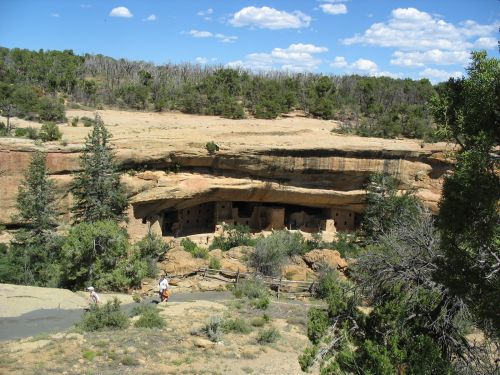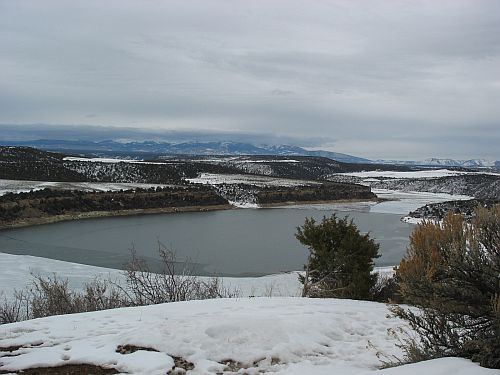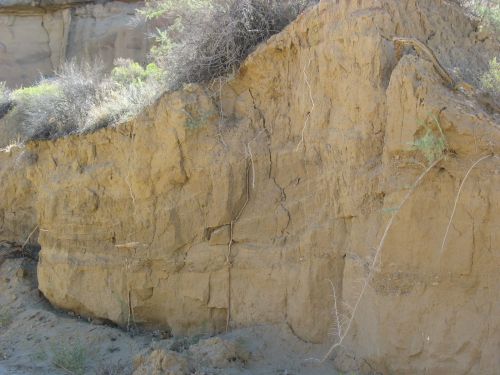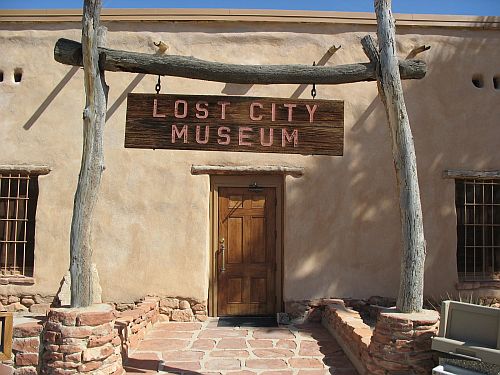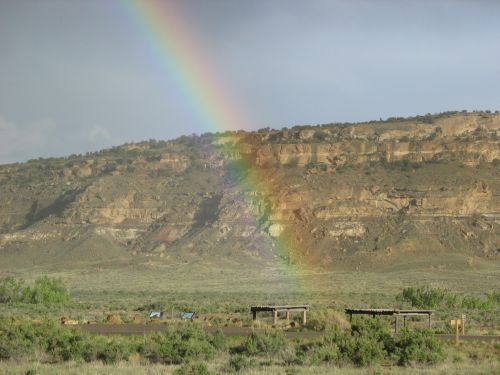Inspired by my recent visit to the Gila Cliff Dwellings, I’ve been reading about the Mimbres Mogollon culture of southwestern New Mexico. As I noted earlier, the cliff dwellings themselves aren’t actually Mimbres, instead belonging to the Tularosa Mogollon culture more common to the north, and they postdate the “Classic” Mimbres period (ca. AD 1000 to 1150, exactly contemporary with the florescence of Chaco further north) by over a century. They do, however, fall well within the area occupied by the Classic Mimbres, and there is in fact a Mimbres village, the TJ Ruin, within the monument boundaries. The upper Gila River valley was a major area of Mimbres settlement during the Classic period, and it had some of the largest Classic villages, although it is not nearly as well understood as the Rio Mimbres valley which is often considered the Mimbres “heartland” and which gave the culture its name. A review article by Michelle Hegmon from 2002 provides a good and relatively recent overview of the major issues in Mimbres archaeology.
The Mimbres are best known for their pottery, some of which features elaborately painted naturalistic designs unlike anything else known from the prehistoric Southwest. This pottery was painted with black paint on a white slip, as was Anasazi pottery from Chaco and other areas at the time, and many of the abstract geometrical designs that form the bulk of the decorated pottery are reminiscent of Anasazi styles. There’s no equivalent among the Anasazi to the naturalistic designs, however, which show elaborately detailed people, animals, possible mythical scenes, and much else. No two designs are exactly alike. Most of the figurative designs were on bowls which were placed with burials, usually with a “kill-hole” through the center of the vessel, which was then placed over the face of the buried individual. Iconographic study of Mimbres pottery dates back nearly a century, starting with the work of Jesse Walter Fewkes of the Smithsonian in the 1910s, but in the past 20 years it has been supplemented by studies taking a more technological approach. Particularly important has been a series of studies using instrumental neutron activation analysis (INAA) to determine the sources of the clay used in the pots and untangle patterns of production and exchange. The results of these studies have generally been consistent with widely distributed production of pottery throughout the region, which is in contrast to other documented cases of community-level specialization in pottery production known from other parts of the Southwest at various times. Design analysis has led some to suggest that the finest of the black-on-white bowls were made by a very small number of potters, however, which implies that perhaps a few specialists in villages scattered across the region made almost all of the well-known naturalistic vessels.
Speaking of villages, one of the most interesting things about the Mimbres is that theirs were quite different from communities found throughout the rest of the Southwest during the Classic period. While most areas, including the Chaco region, had communities of loosely clustered small house sites, the Mimbres were aggregated into large, dense villages made up of roomblocks very similar to those that would become increasingly common in Pueblo sites to the north starting in the thirteenth century and continuing into the historic period. Indeed, some have argued that the Classic Mimbres invented the “Pueblo” as a type of community, and even that many of the social institutions of the modern Pueblos, such as the kachina cult, derive ultimately from Mimbres precursors. There is definitely a clear continuum in artistic style from Mimbres pottery through Jornada Style rock art to the Rio Grande style of rock art and mural painting that appears among the northern Pueblos beginning around AD 1300.
After the decline of Chaco around AD 1130, the northern Southwest witnessed a pattern of ever-increasing aggregation eventually resulting in the modern Pueblos with their very Mimbres-like plans and institutions. There have been various explanations offered for why this occurred, and I think those that attribute it largely to increased warfare are among the most persuasive. There is definitely much more direct evidence for violence after about AD 1150 than before then. Whatever was causing trouble in Pueblo societies at this time, it seems very likely that solutions drawn from the Mimbres experience became increasingly attractive further north.
But what was that experience? Why did the Mimbres aggregate into large Pueblos at a time when everyone else lived in scattered small houses? The Classic Mimbres period coincides with a time of remarkable peace throughout most of the Southwest, so defense seems less likely as an explanation here than it does later on. Some of the Mimbres pots do show scenes of violence, including a well-known beheading, but it’s not at all clear that these show actual events rather than myths. In general, there doesn’t seem to be any more evidence for warfare among the Classic Mimbres than anywhere else at the same time, which makes their much denser settlement pattern particularly mysterious. It may have had something to do with irrigation agriculture, which the Mimbres had probably adopted somewhat earlier under the influence of the Hohokam in southern Arizona, who were by far the most accomplished irrigators of the prehistoric Southwest. Among the Mimbres, as among other Mogollon groups, there was extensive Hohokam influence early on, which seems to have largely ceased by AD 1000, possibly replaced by increased influence from the Anasazi to the north (although this is controversial). Steve Lekson, who has done a lot of work in the Mimbres area in addition to his work at Chaco, has argued that the Classic Mimbres consists of “an Anasazi lifestyle supported by Hohokam infrastructure,” and I think there may be something to that. The labor demands of irrigation may have led to residential aggregation, although it’s important to note that the Hohokam themselves never aggregated to anything like the same degree despite their much more elaborate irrigation systems.
What’s even more puzzling about the Mimbres, however, is what they did after the end of the Classic period. The large villages and figurative pottery seem to come to a rather sudden end around 1150, about the same time that Chaco declined and the northern Southwest entered a long, difficult period of warfare, aggregation, and regional abandonment. It used to be thought that the Mimbres just “collapsed” at this time, with their ultimate fate unknown, but more recent research, especially in the eastern Mimbres area along the Rio Grande near the modern town of Truth or Consequences, has shown that the real story is more complicated. Margaret Nelson has been researching settlement patterns in the eastern Mimbres area, and she has found that one notable shift after the end of the Classic period involved the dissolution of the aggregated Classic villages and the dispersal of people into small hamlets, often built on the sites of Classic fieldhouses. She also sees continued production of Mimbres pottery, although apparently without the distinctive naturalistic designs, for a long time after the end of the Classic. Hegmon, who has collaborated with Nelson on much of this work, has proposed calling these occupations “Postclassic Mimbres.” They show much more extensive trade of pottery with surrounding areas than during the Classic period, as well as more variable architecture, implying that whatever social controls had held the large Classic villages together had broken down and been replaced by a more flexible social system.
What’s remarkable about this is that it’s basically the opposite of what was happening everywhere else in the Southwest, where the dominant trend during this period was aggregation. The Mimbres, at least in the east, were instead dispersing. The picture is less clear in the Mimbres and Gila valleys further west, but at least some of the Classic villages seem to have continued to be occupied at lower population levels (similar to what was going on at Chaco), while a new type of occupation seen at some sites in the area, known as the Black Mountain Phase, may or may not represent a change in Mimbres culture. There is debate over whether the Black Mountain Phase actually shows continuity with Classic Mimbres or not. It’s also possible that some people headed south, to the rising center at Casas Grandes, in which case they would be participating in the trend toward aggregation.
It’s becoming increasingly clear, then, that the Mimbres didn’t really collapse or totally abandon their region in 1150. Instead, they seem to have sort of splintered, with some scattering to hamlets on the sites of former field houses, others possibly reorganizing their communities into Black Mountain Phase sites, and still others migrating away from their region either south to Casas Grandes or east to the Jornada area, where the very Mimbres-like Jornada petroglyph style seems to appear around this time. This process of dispersal when everyone else was aggregating, combined with their earlier aggregation when everyone else was sprawling across the landscape, gives a distinct “out of phase” feel to Mimbres cultural dynamics.
I certainly don’t have any solutions to propose to the mysteries of the Mimbres, and as far as I can tell no one else really does either. They’re among the most fascinating of the many peoples who inhabited the prehistoric Southwest, and while they are by no means the most obscure, outside of specialist circles they are known almost exclusively for their pottery. The pottery is amazing, of course, and quite deserving of attention, but there’s much more to the Mimbres than their pots.
![]()
Fewkes, J. (1916). Animal Figures on Prehistoric Pottery from Mimbres Valley, New Mexico American Anthropologist, 18 (4), 535-545 DOI: 10.1525/aa.1916.18.4.02a00080
Gilman, P., Canouts, V., & Bishop, R. (1994). The Production and Distribution of Classic Mimbres Black-on-White Pottery American Antiquity, 59 (4) DOI: 10.2307/282343
Hegmon, M. (2002). Recent Issues in the Archaeology of the Mimbres Region of the North American Southwest Journal of Archaeological Research, 10 (4), 307-357 DOI: 10.1023/A:1020525926010
Hegmon, M., Nelson, M., & Ruth, S. (1998). Abandonment and Reorganization in the Mimbres Region of the American Southwest American Anthropologist, 100 (1), 148-162 DOI: 10.1525/aa.1998.100.1.148
Nelson, M., & Hegmon, M. (2001). Abandonment Is Not as It Seems: An Approach to the Relationship between Site and Regional Abandonment American Antiquity, 66 (2) DOI: 10.2307/2694606



